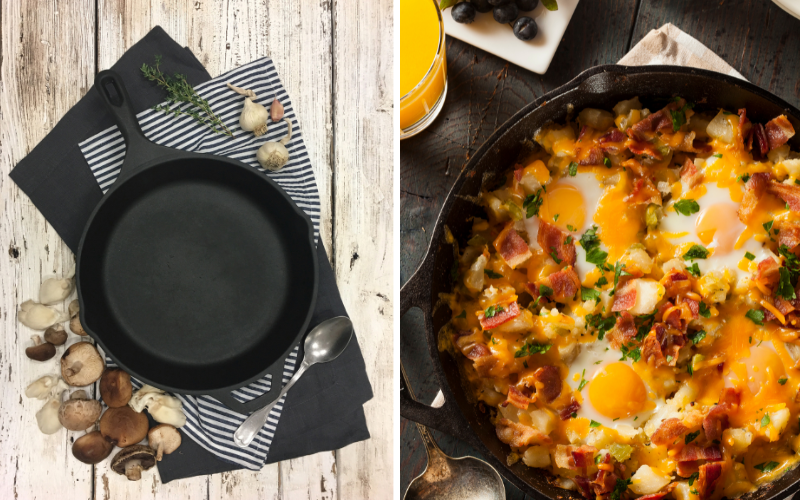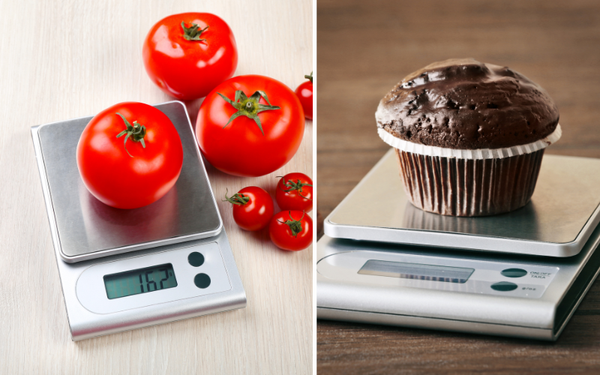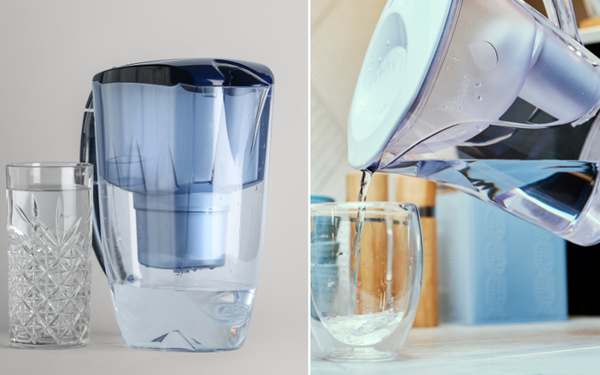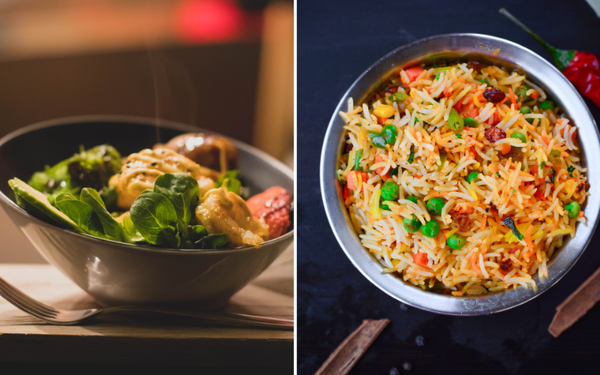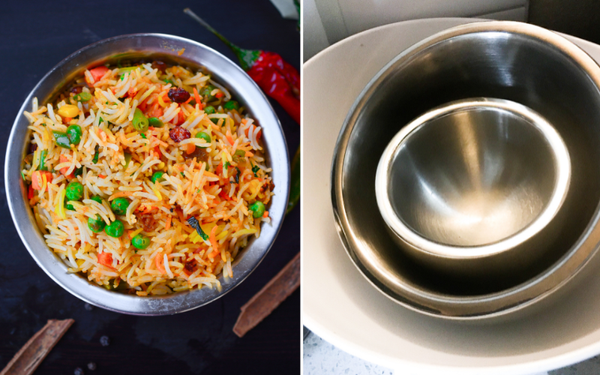A deep skillet, also known as a sauté pan, is the cookware of choice for those aiming to expand their culinary repertoire. But, what is a deep skillet called? It’s designed with high, straight sides and a flat bottom, making it ideal for tasks ranging from frying to slow cooking.
This guide delves deep into the world of deep skillets, highlighting their features, versatility, and the considerations you’d want to make when selecting one for your kitchen.
Key Takeaways
- Deep skillets, also known as sauté pans, are versatile cookware with straight sides, flat bottoms, and long handles, designed for various cooking techniques including frying, braising, and simmering.
- Materials like stainless steel, cast iron, and non-stick coatings each offer unique benefits for deep skillets, such as durability, even heat distribution, and ease of cleaning depending on the substance.
- Appropriate deep skillet maintenance involves material-specific cleaning methods, regular seasoning for cast iron, and using gentle cleaners for non-stick surfaces to extend the life of the cookware.
Deep Skillets Explained

Deep skillets, otherwise known as sauté pans, are distinguished by their straight sides, flat bottoms, and long handles. These features make them versatile for numerous cooking techniques. These types of pans are not just your regular pots and pans. They are designed to handle everything from frying eggs to slow cooking lamb shanks.
The versatility of a deep skillet is its standout feature. Whether you’re planning a quick stir-fry for dinner or slow cooking a mouthwatering roast for Sunday lunch, the deep skillet is up to the task. It’s essentially a fry pan, roasting pan, and stock pot all rolled into one.
Design Features
Deep skillets, akin to sauté pans, boast of the following features:
- Steep, straight sides
- Flat bottom
- Greater depth compared to other skillets
- Long handles and lids
- Larger cooking surface that makes stirring and turning food a breeze.
In choosing a handle for your deep skillet, prioritize sturdy metal handles that are securely fastened with screws or rivets. After all, you wouldn’t want your pan slipping out of your hands while you’re flipping those pancakes, would you?.
The design of a deep skillet is not just about aesthetics. The straight sides and flat bottom contribute to even heat distribution, ensuring that your food cooks evenly. Whether you’re sautéing vegetables or slow cooking lamb shanks, you can rest assured that your deep skillet will deliver optimal results.
More than just a pan, the deep skillet is a testament to how design and functionality can merge to create an essential kitchen tool. When it comes to the best sauté pans, deep skillets undeniably top the list.
Cooking Techniques
In the cooking world, the deep skillet is a multi-talented player. Its versatility stems from its suitability for a range of cooking techniques like:
- sautéing
- frying
- braising
- simmering
This is made possible by the choice of cookware materials like stainless steel, cast iron, and non-stick surfaces.
Much like a fry pan, deep skillets excel at sautéing, frying, and even deep frying. Their depth and ample cooking surface make it easier to flip pancakes, cook eggs over-easy, and stir and turn food. Imagine the joy of effortlessly flipping your pancakes without worrying about making a mess.
If you’re a fan of soups and stews, you’ll love the deep skillet. Its depth makes it perfect for:
- braising
- simmering, similar to a stock pot
- sautéing mirepoix and/or proteins before adding stock and other ingredients for slow cooking these types of dishes.
From sautéing and frying to braising and simmering, the deep skillet is truly a hero in the kitchen. Its ability to handle diverse cooking tasks makes it an essential tool in any cookware set. Whether you’re whipping up an Asian cuisine-inspired stir fry or slow cooking a hearty stew, the deep skillet has got you covered.
Deep Skillet vs. Frying Pan
As we delve further into the realm of cookware, distinguishing between deep skillets and frying pans is vital. While they may seem similar, their design and functionality differ significantly.
Deep skillets are marked by straight sides and greater depth, in contrast to frying pans which boast sloping sides. Deep skillets can be used for similar purposes as a Dutch oven, such as braising and simmering. The straight and deep sides of a deep skillet provide an increased liquid holding capacity for braising and stewing, while the sloping sides of a frying pan are tailored for rapid evaporation, making them ideal for pan frying, stir frying, and sautéing.
Moreover, the sloped sides of a frying pan make it easier to flip food with a turner compared to a deep skillet with straight sides. They also promote rapid evaporation, which is perfect for high-heat searing and achieving a desirable crust on the food.
In summary, while deep skillets and frying pans each have unique strengths, your cooking requirements will ultimately determine your choice between them. Looking to sear a juicy steak? Go for a frying pan. Planning to slow cook a flavorful stew? A deep skillet is your best bet.
Deep Skillet vs. Sauté Pan
The deep skillet and sauté pan are two types of cookware that often cause confusion. While they share many similarities, they have distinct differences that impact their performance in the kitchen, making the choice between a saute pan and its counterpart crucial.
Deep skillets are marked by straight, higher sides and more depth, whereas sauté pans feature lower, sloping sides. These design distinctions have implications for the functionality of the cookware in the kitchen. The deep skillet is favored by most cooks for tasks like sautéing and pan-frying due to its ease of maneuverability. On the other hand, the sauté pan is recommended for its overall versatility and is commonly chosen if one can only have one pan.
A sauté pan’s straight sides are specifically designed for:
- Holding liquids and slow evaporation, making it advantageous for methods such as poaching and braising, similar to a sauce pan
- Reducing the risk of cooking liquids sloshing over the sides, enhancing safety
- Assisting with handling larger volumes of liquid due to their bulkiness and weight
Regardless of whether you opt for a deep skillet or a sauté pan, your unique cooking requirements should guide your decision. If you frequently cook in large quantities or prefer slow cooking techniques, a deep skillet might be your perfect match. But if you’re looking for versatility and ease of maneuverability, you might find a sauté pan more suited to your needs.
Popular Deep Skillet Materials
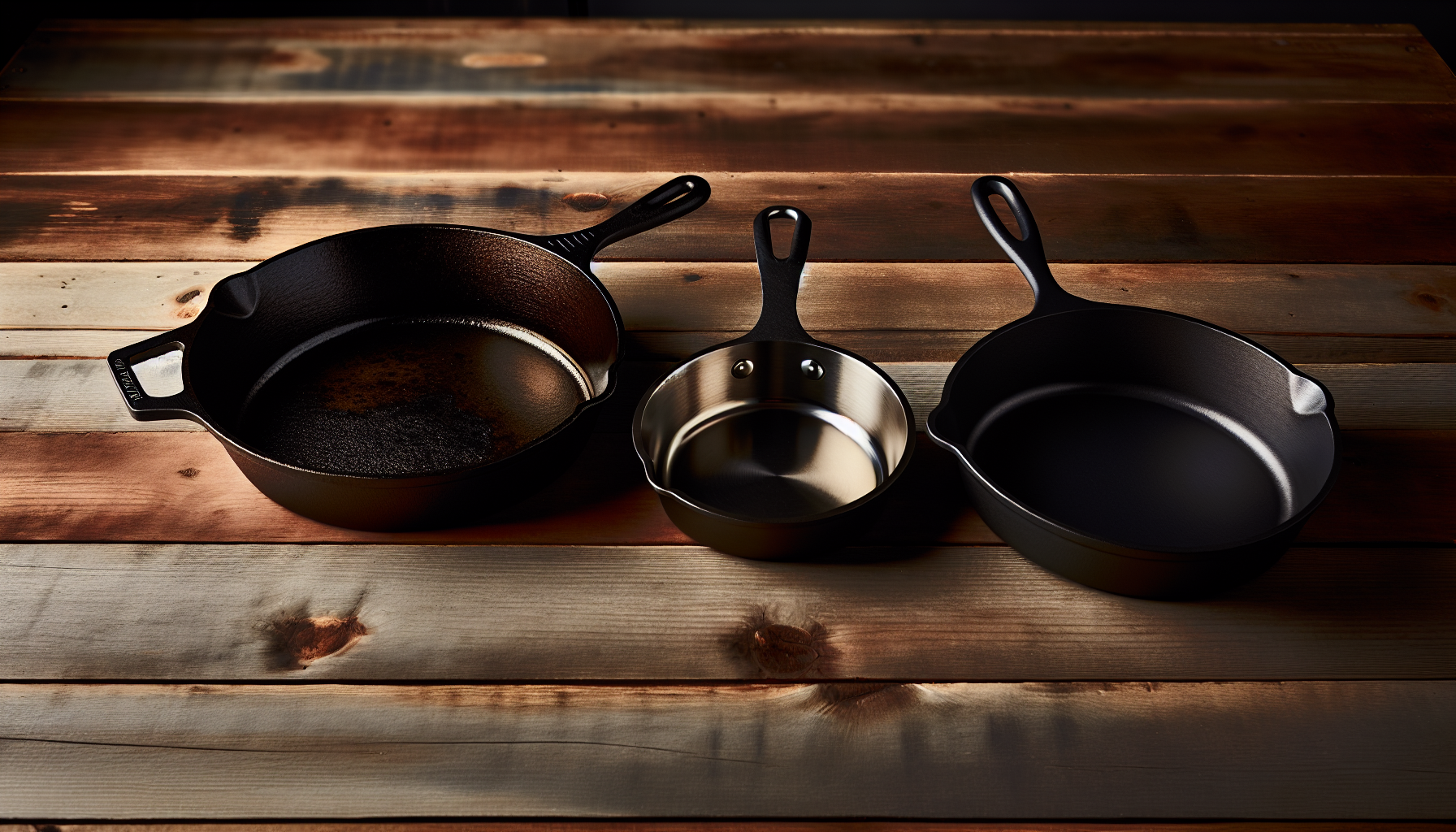
The material of your deep skillet can have a significant influence on your cooking experience. Deep skillets are usually made from materials like cast iron, stainless steel, and nonstick coatings, each with its own set of advantages and disadvantages.
Cast iron skillets are favored for their exceptional durability, ability to withstand high temperatures, and their ability to enhance the flavor of food. However, they can be quite heavy and require regular seasoning to prevent food from sticking.
Stainless steel deep skillets, on the other hand, are excellent for achieving a golden brown exterior when cooking, do not react with acidic foods, and have excellent heat retention with cladding. However, they can be quite expensive and are generally heavy.
Copper and hard-anodized materials also make great deep skillets. Copper is known for its superior heat retention, allowing for fast and even cooking. However, it may occasionally impart a metallic taste when reacting with acidic or alkaline foods. Hard-anodized cookware is exceptionally durable, harder than steel, and can be safely cleaned in the dishwasher.
Choosing the Right Deep Skillet
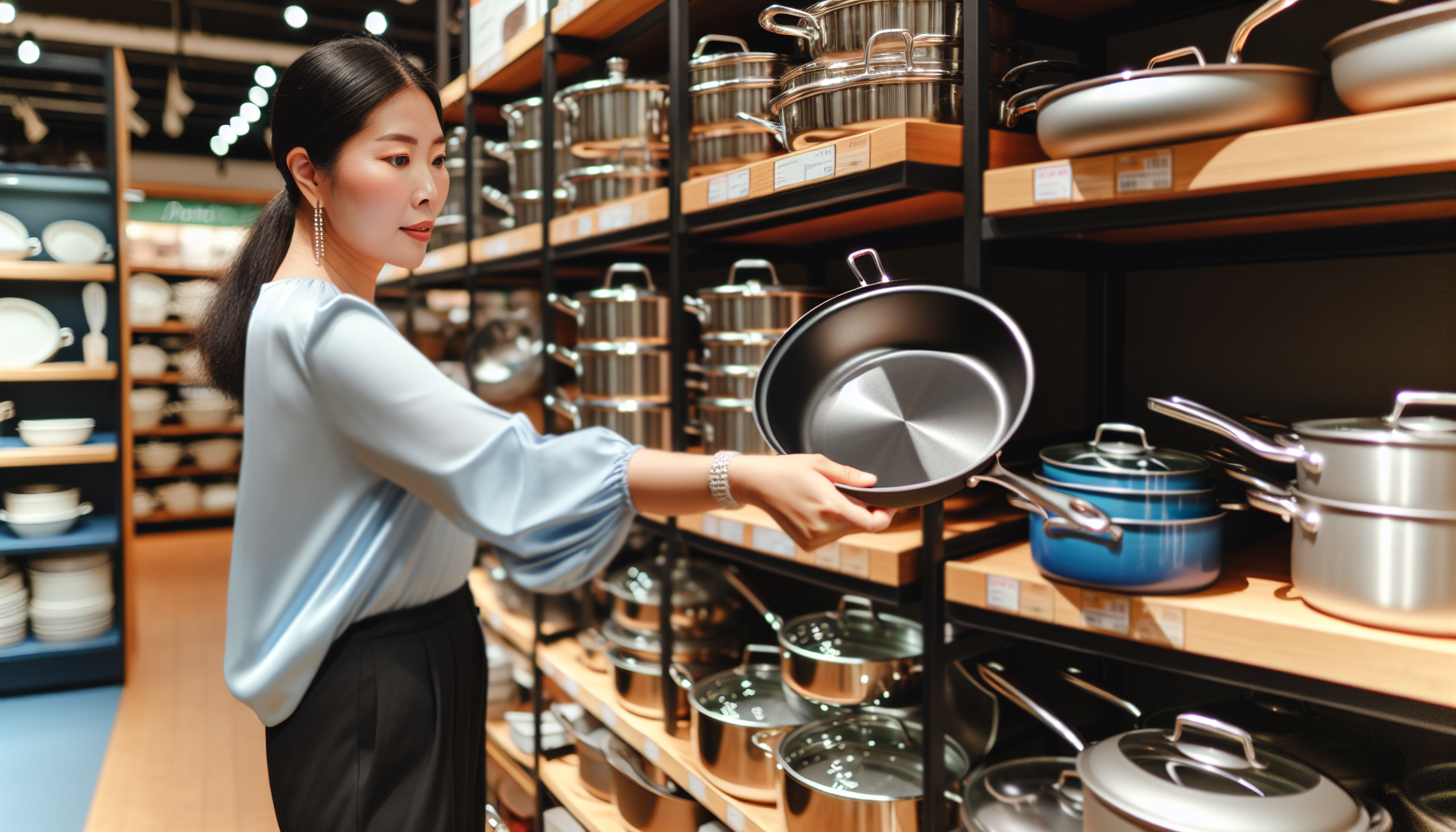
Selecting the perfect deep skillet can be a daunting task given the wide variety of options available in the market. However, by considering factors such as size, material, and your cooking style, you can find the perfect deep skillet that best suits your needs.
Deep skillets are available in a range of sizes, typically from 8 to 12 inches. Smaller sizes are suitable for cooking small portions, while larger sizes are great for preparing larger quantities or complete one-pan meals.
The skillet’s material is also a key factor to consider. It determines the skillet’s thermal conductivity and heat retention, which are important for ensuring quick and even heat distribution. Some recommended materials for skillets are:
- Stainless steel: great for searing and sautéing
- Enameled cast iron: suitable for high-heat and slow cooking, simmering, and sautéing
- Cast iron: recommended for various cooking methods
- Carbon steel: also recommended for various cooking methods
After determining the size and material of your deep skillet, take into account your cooking style. If you frequently sauté or fry, a deep skillet with a large surface area would be ideal. On the other hand, if you prefer slow cooking, a deep skillet with high sides would be more suitable.
Caring for Your Deep Skillet
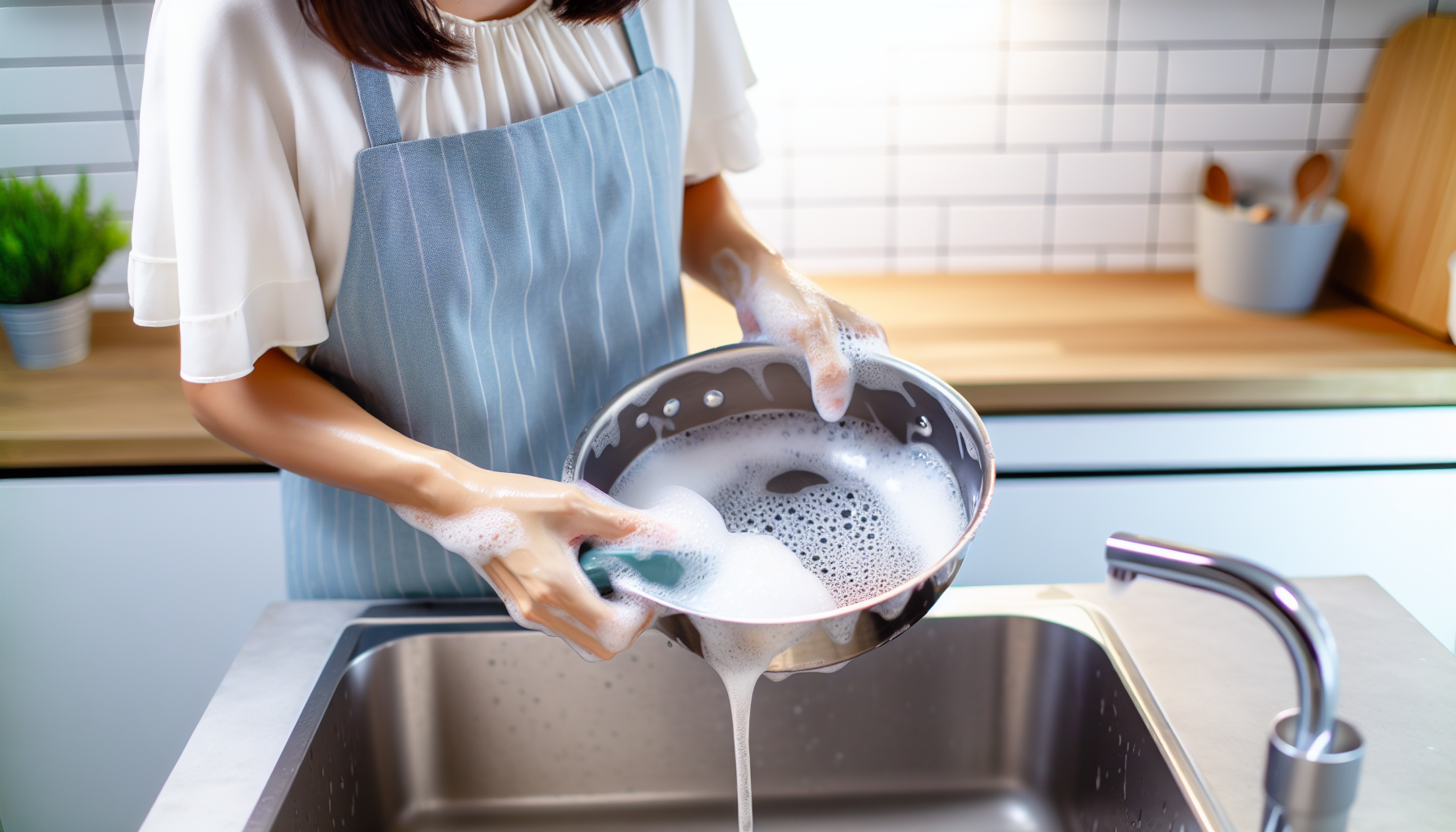
Appropriate care and maintenance can substantially prolong your deep skillet’s lifespan and guarantee peak performance. Each material requires a specific cleaning method to maintain its quality.
For cleaning a cast iron skillet, it’s advisable to only use water and refrain from using soap. Regular seasoning is also essential to prevent food from sticking.
Stainless steel skillets can be cleaned with dish soap and warm water. For tough spots, using vinegar is recommended.
Non-stick skillets should be cleaned using a mixture of baking soda and water, with the addition of vinegar for charring, and a soft cloth with mild dish soap for everyday cleaning.
For cast iron cookware, it is recommended to fully re-season your cookware one to two times a year, or as needed after cooking messy foods.
The right cleaning products can also make a difference. Bar Keepers Friend and dish soap with surfactants are recommended for cleaning deep skillets without harming the seasoning.
Top Deep Skillet Recommendations
When it comes to deep skillets, different brands offer unique features that cater to different cooking needs. Based on customer reviews and expert opinions, there are several deep skillets that stand out in the market. Some highly recommended options include:
- All-Clad D3 sauté pan
- Joan 12-Inch Polished Cast-iron Skillet
- Lodge 12-Inch Cast-iron Skillet
- Mauviel M’steel Carbon Steel Skillets
- Misen Stainless Skillet
- Le Creuset Nonstick Pan
These skillets are favored by cooking professionals and home chefs alike.
The Finex Cast Iron Skillet & Lid Set is highly recommended by chefs due to its robustness in both slow cooking in the oven and searing proteins, making it suitable for fulfilling diverse cooking needs.
If you’re a fan of paella, you might want to consider the Nordic Ware Paella Pan. Cozymeal recommends it due to its heavyweight durability and outstanding flavor retention, making it an ideal choice for cooking paella.
Deep Skillet Recipes to Try
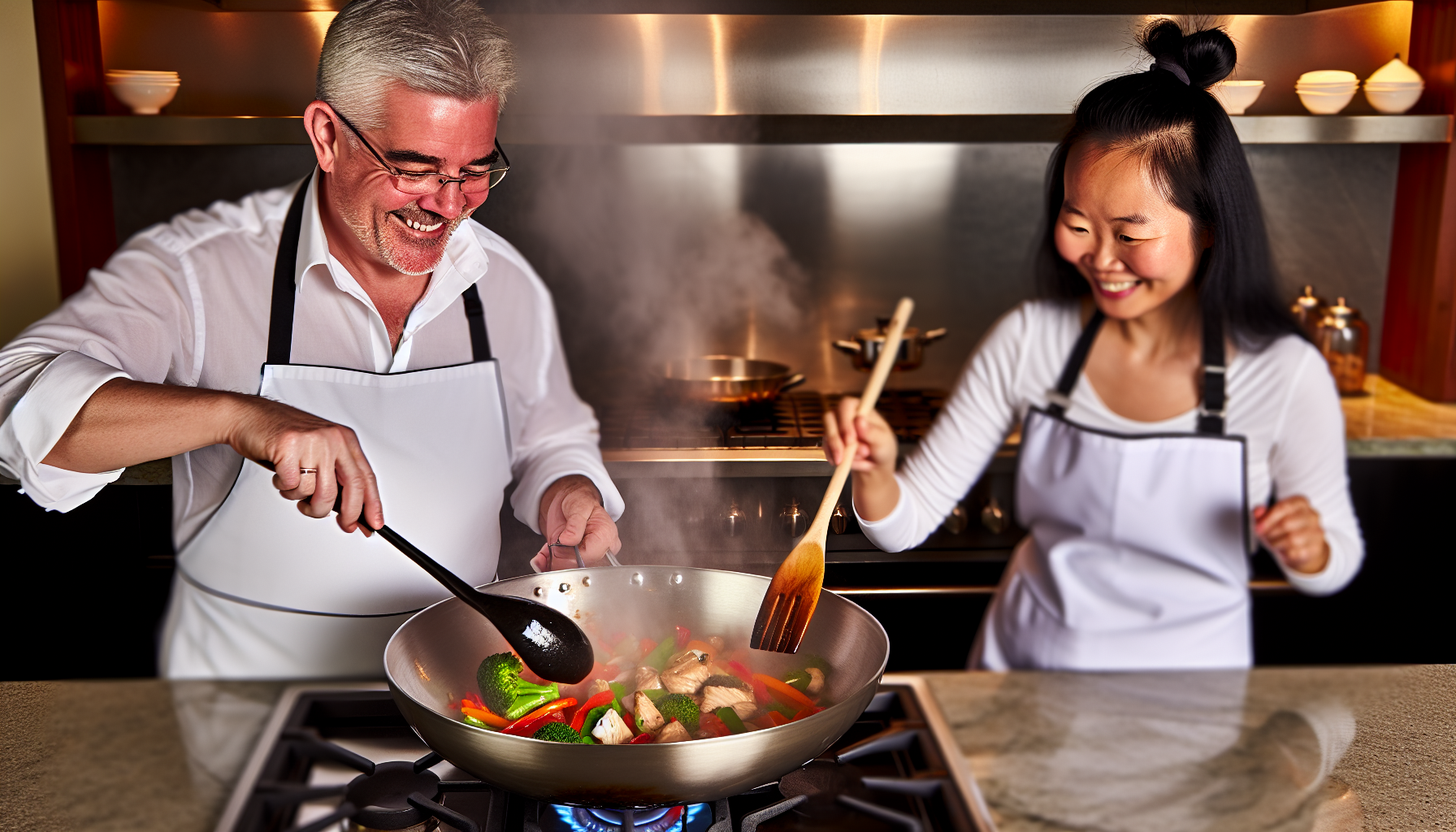
With your deep skillet in hand, a world of culinary opportunities awaits you. Here are just a few things you can make with a deep skillet:
- Seared steaks
- Crispy bacon
- Sweet fruit cobblers
- Scrumptious cookie cakes
A deep skillet can handle it all.
A deep skillet is an ideal choice for preparing a stir fry. Here’s how to do it:
- Cook chicken pieces until they are fully cooked.
- Add vegetables such as broccoli until they reach the desired tenderness.
- Season with garlic, ginger, and red pepper flakes to create a delicious stir fry dish.
If you’re a fan of pizza, you’ll be pleased to know that you can use a deep skillet, like a cast iron skillet, to bake a pizza. All you need to do is coat the skillet with olive oil, assemble the crust and toppings, and bake until you achieve a thick, crisp, and chewy crust.
But the fun doesn’t stop there. From hearty stews to fluffy pancakes and everything in between, the deep skillet is truly a versatile piece of cookware that can help bring your culinary creations to life.
Summary
We’ve covered a lot of ground in this exploration of deep skillets. From their unique design features to their versatility in cooking, deep skillets truly shine as an essential piece of kitchen cookware. Whether you’re a professional chef or a home cook, a deep skillet can transform your cooking experience, making it a joy to whip up delicious meals every day.
Choosing the right deep skillet can be a game-changer in your kitchen. By considering factors such as size, material, and your cooking style, you can find a deep skillet that best suits your needs. With proper care and maintenance, your deep skillet can serve you for years to come, making it a worthy investment.
With the myriad of deep skillet options available in the market, finding the perfect one can be daunting. But armed with the right information and a clear understanding of your cooking needs, you can make an informed decision that will reward you with delicious meals and a delightful cooking experience.
Whether you’re searing a juicy steak, whipping up a hearty stew, or baking a crispy pizza, a deep skillet is a reliable partner that can handle it all. So why wait? Embark on your culinary adventures with a deep skillet today and discover the joy of cooking like never before.
Frequently Asked Questions
What is a deeper pan called?
A deeper pan is commonly referred to as a roasting pan, while a shallower pan is known as a baking tray. These pans are typically used for slow braising of large cuts of meat.
What is a deep skillet?
A deep skillet, also known as a sauté pan, is a versatile type of cookware with straight sides, a flat bottom, and long handles, suitable for various cooking techniques.
How does the design of a deep skillet affect its cooking capabilities?
A deep skillet's design with straight sides and a flat bottom allows for even heat distribution, making it easier to cook food evenly and stir or turn it as needed. This design enhances the skillet's cooking capabilities.
What are the recommended cleaning methods for different types of deep skillets based on their material?
To clean different types of deep skillets, use water only for cast iron, dish soap and warm water for stainless steel, and a mixture of baking soda, water, and vinegar for non-stick skillets. Avoid using soap on cast iron.
What are some meal examples that can be prepared using a deep skillet?
You can prepare a variety of meals like seared steaks, crispy bacon, fruit cobblers, and cookie cakes in a deep skillet. Enjoy exploring different recipes!
You Might Also Like...
